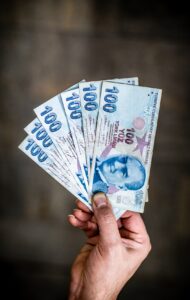The Basics of Forex Trading: Understanding Currency Pairs and Exchange Rates
Forex trading, also known as foreign exchange trading, involves the buying and selling of different currencies with the aim of making a profit. It is the largest and most liquid market in the world, with an average daily trading volume of around $6 trillion. To be successful in forex trading, it is essential to understand the basics, including currency pairs and exchange rates.
Currency Pairs:
In forex trading, currencies are always traded in pairs. A currency pair consists of a base currency and a quote currency. The base currency is the first currency in the pair, while the quote currency is the second currency. For example, in the currency pair EUR/USD, the euro (EUR) is the base currency, and the US dollar (USD) is the quote currency.
Currency pairs are quoted in two ways: the base currency/quote currency or the quote currency/base currency. For instance, in the EUR/USD pair, the exchange rate might be quoted as 1.1200, indicating that one euro is equal to 1.1200 US dollars. Alternatively, it could be quoted as 0.8929, meaning one US dollar is equal to 0.8929 euros.
The most traded currency pairs in the forex market are known as the major currency pairs. These include EUR/USD, GBP/USD, USD/JPY, and USD/CHF. Major currency pairs typically have high liquidity and tight spreads. In addition to major currency pairs, there are also minor currency pairs and exotic currency pairs, which involve less commonly traded currencies.
Exchange Rates:
Exchange rates play a crucial role in forex trading. They determine the value of one currency relative to another. Exchange rates are influenced by various factors, including economic indicators, political events, and market sentiment. Understanding how exchange rates work is essential for forex traders.
Exchange rates can be either fixed or floating. A fixed exchange rate is determined by the government or central bank and remains constant. In contrast, a floating exchange rate is determined by market forces, such as supply and demand. Most major currencies have floating exchange rates.
Exchange rates are expressed in different ways. The two common types of exchange rate systems are direct and indirect rates. In a direct rate system, the domestic currency is the base currency, while in an indirect rate system, the domestic currency is the quote currency.
For example, let’s consider the exchange rate between the US dollar (USD) and the British pound (GBP). If the exchange rate is quoted as 1.3200, it means that one US dollar is equal to 1.3200 British pounds. In this case, the USD is the base currency, and the GBP is the quote currency. However, if the exchange rate is quoted as 0.7576, it means that one British pound is equal to 0.7576 US dollars. Here, the GBP is the base currency, and the USD is the quote currency.
Factors Affecting Exchange Rates:
Several factors influence exchange rates in the forex market. These factors can be broadly categorized as economic, political, and market sentiment.
Economic factors include interest rates, inflation rates, GDP growth, and trade balances. Higher interest rates tend to attract foreign investors, increasing demand for the currency and strengthening its value. Inflation erodes the purchasing power of a currency, leading to a decrease in its value. GDP growth and trade balances also impact exchange rates, as strong economic performance attracts investment and boosts the currency’s value.
Political events, such as elections, government policies, and geopolitical tensions, can have a significant impact on exchange rates. Political stability and positive policy changes often lead to a stronger currency, while political uncertainty can weaken a currency.
Market sentiment, driven by investor psychology and market speculation, can cause significant fluctuations in exchange rates. Positive sentiment towards a currency can lead to increased demand and appreciation, while negative sentiment can result in depreciation.
Conclusion:
Understanding currency pairs and exchange rates is fundamental to forex trading. The forex market offers numerous opportunities for profit, but also carries inherent risks. By comprehending the basics of currency pairs and exchange rates, traders can make informed decisions and navigate the forex market more effectively. It is crucial to stay updated on economic and political developments that may impact exchange rates, as well as continuously analyze market sentiment. With proper knowledge and analysis, forex trading can be a lucrative venture for those willing to put in the time and effort.






